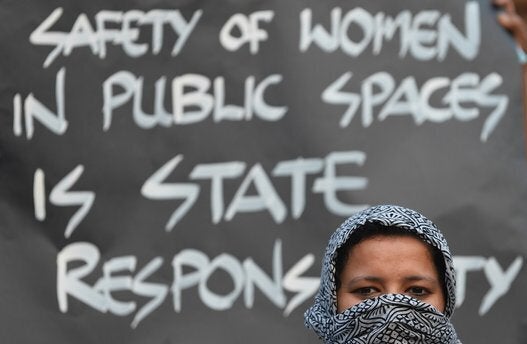
They have been discussing trade in nuclear fuel. They should have, instead, focused more on feeding the hungry, especially the female children in India.
On his recent visit to Canada, the Indian Prime Minister, Narendra Modi, successfully negotiated with the Canadian government to import 7.1-million pounds of Canadian Uranium concentrate. The nuclear fuel deal will help India meet its energy shortfall. But at the same time, Modi must focus on food security to address stunted growth, which now affects 40 per cent of young children in India .
Despite the rapid economic development in India since the early '90s, Indian children continue to be shorter than those in Sub-Saharan Africa are. However, the first-born children in India, especially sons, are taller than their Sub-Saharan counterparts are. This anomaly results from Indian parents' preference for sons.
In a recent paper, Seema Jayachandran of Northwestern University and Rohini Pande of Harvard University explore the stunted growth of Indian children relative to their Sub-Saharan counterparts. The authors believe that the societal biases in India, which favour male offsprings over female, are to be blamed. Their carefully crafted study offers additional nuanced explanations of the height disparities.
The ultimate goal of economic development is to achieve social justice and equity for all. The systematic biases that facilitate discrimination of girls, even at the hands of family, need to be confronted. When households stop stretching their fertility in hopes of having a son, a healthier and just society will emerge in India.
According to UNICEF, globally one in four children under the age of five is stunted. Of those almost 50 per cent live in Asia. India holds the unfortunate distinction for one of the highest stunting rates for children. Malnutrition is the primary cause of stunted growth in children that affects their overall health and cognitive abilities.
In the neighbouring Pakistan, the situation is even worse even when the primary triggers behind the phenomenon may be different. The National Nutrition Survey in Pakistan in 2011 revealed that 44 per cent of children under five in Pakistan were stunted.
Seema Jayachandran and Rohini Pande undertook a comparative study of children under the age of five in India and 25 Sub-Saharan countries. Their data set contained information on 174,000 children. The authors obtained data from the national Demographic and Health Surveys for comparable periods. Their findings revealed the hitherto unknown trends in stunting resulting from Indian families' preference for a son.
The authors found that, on average, only the first-born sons in India were taller than African first-born children. The second-born child in India was shorter than the Sub-Saharan African child was. At the same time, higher birth order children in India were even worse off. Furthermore, an Indian son with an older sibling was found to be taller than his African counterpart if and only if the Indian child was the eldest son. In addition, the India-Africa height difference was the greatest for daughters with no older brothers.
How much of the stunted growth among Indian children is caused by genes? Earlier research indicates that Indian children after migrating to developed countries are able to narrow the height gap with the rest of the world, yet are seldom able to close it. However, even if genetics were partially responsible for the stunted growth of Indian children, it would still not explain the intra-family differences in stunting between genders and birth order.
The authors believed that their peculiar findings were a result of the families' preference for the eldest son, i.e., having at least a son or the eldest son to be healthy. Such preferences result in unequal intra-family distribution of resources. That is perhaps the reason the second-born children in India are taller than those in sub-Saharan Africa are only when the second-born was the eldest son. This happens because the eldest son, despite being second-born, competes for family's resources against the older female sibling.
The authors explain that when a mother repeatedly gives birth to daughters, the family keeps trying for more children, hoping that the next birth will result in a male offspring. Such families end up having more children than they had initially intended. These families would consider the birth of a girl an undesirable outcome, which will result in even fewer resources spent on the newborn. This causes the stunting to be increasingly worse for the second and later order births in India.
There remains yet another interesting finding in this research. When the same phenomenon was studied separately for Hindus and Muslims, the authors did not find evidence of stunting for second and higher order births among Indian Muslims. The authors believe this is because Islam does not put the same emphasis on male offspring. Similarly, the authors found no evidence for birth order differences in stunting in Kerala, which is an Indian State with one of the highest literacy rates and matriarchal traditions.
The girl child in South Asia needs the State's protection so that she may also grow up to be healthy and contribute to the well-being of her family and society. A healthy and prosperous society is not possible without healthy daughters and sons.
A version of this piece appeared earlier at Dawn.com.
ALSO ON HUFFPOST:
